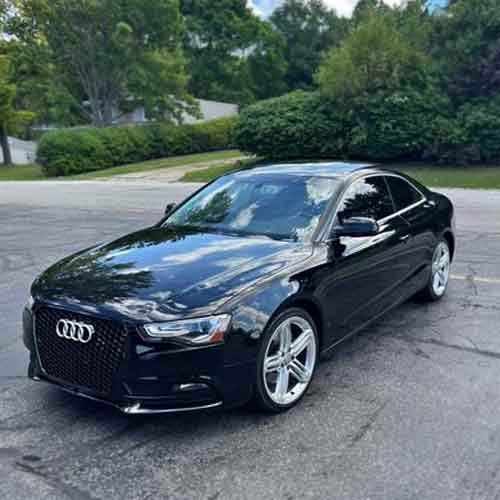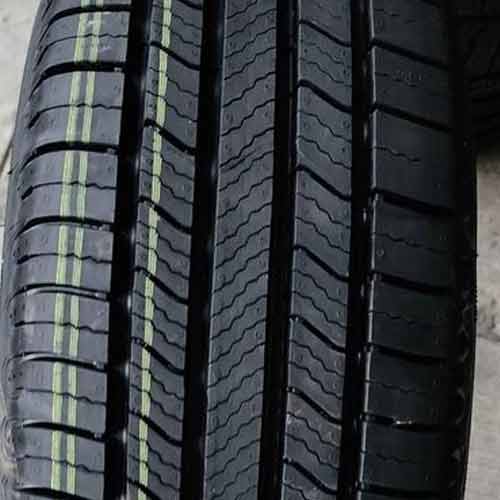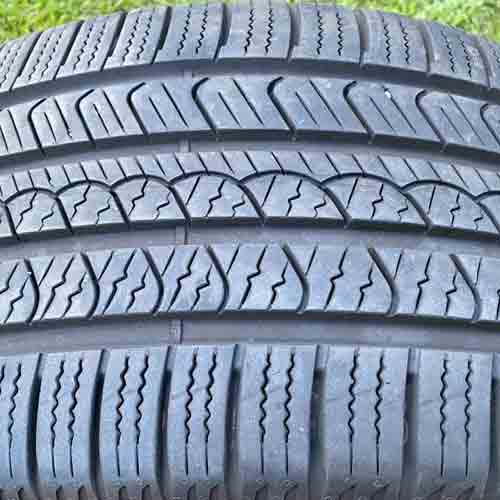The Pirelli Scorpion AS Plus 3, a Crossover/SUV Touring All-Season tire, is aimed at drivers of crossovers, SUVs, and pickup trucks, whereas the Michelin Defender 2, being standard touring, caters to broader range of vehicles. But which tire is better? Well let’s find out.

Speaking from my experience in tire engineering, the Michelin Defender 2 stands out for its superior dry performance, showcasing improved handling and steering, an exceptional tread longevity, and greater fuel efficiency (thanks to its lighter weight). Conversely, the Pirelli Scorpion AS Plus 3 leads in wet performance, offering better water evacuation, stronger winter traction, and superior ride comfort due to a construction that smoothly absorbs road irregularities and lessens road noise.
Size Variants
The Pirelli Scorpion AS Plus 3 comes in 17 to 22 inches wheels. And all of those sizes have following specifications.
- Speed ratings: T, H and V.
- Load ratings: SL and XL.
- Tread depth: 11/32″ on all.
- Weight range: 29 to 42 lbs.
- Treadwear warranty: 70k miles.
- UTQG rating: 800 A A.
Review this tire in greater details: https://tiredriver.com/pirelli-scorpion-as-plus-3-review/
The Michelin Defender 2 comes in 16 to 20″ inches rims, having following specs.
- Speed ratings: H (on all)
- Load ratings: SL and XL
- Tread depth range: 10.5/32″ (on all)
- Weight range: 25 to 32 lbs
- Winter ratings: Only M+S no 3PMSFR.
- Tread mileage rating: 85k miles.
- UTQG rating: 800 A A.
Review this tire in greater details: https://tiredriver.com/michelin-defender-2-review/
Tire Structure
The Michelin Defender 2 showcases a less biting tread, in comparison.

The tire is distinguished by a rounded contact patch, optimizing weight distribution across its surface.
Though it doesn’t have a lot of weight to begin with.
This is thanks to it’s light weight internal construction, consisting of a single-layer polyester casing, complemented by two steel belts and a nylon cap ply.
Speaking of its tread, you see 5 ribs, where shoulders come with minimal tread features, as you can see form its image.
While the central 3 ribs, laced with multi-directional siping are slightly more biting.
And looking at the, you can see that while the central most rib is continuous running, the adjacent ribs also have lateral voids, additionally.
Moving towards the Pirelli Scorpion, this tire comes with a totally different asymmetric tread design.

Now this tire also comes with a 5 rib design, and it’s central most rib is also continuous running, it clearly features a more aggressive design.
This rib is characterized by curved in-groove notches, which split up siping pattern in to two, wave-like and linear ones.
And this goes for the adjacent ribs as well, where both of them vary in terms of the siping designs they have.
Though both of them have proper (slightly curved) lateral voids, interconnecting circumferential grooves.
The shoulder lugs are also more aggressive compared to Defender.
They come with lateral linear slits and grooves, which are joined up by longitudinal sipes as well.
Internally, the Scorpion AS is fortified with 2 layers of polyester, complemented by 2 nylon cap plies and a pair of steel belts.
Dry Performance
When examining how a tire performs on dry surfaces, two pivotal factors are considered:
- Handling: This encompasses steering responsiveness and lateral grip.
- Directional Stability/Grip: It relates to the tire’s ability to maintain its (straight) trajectory and traction.
Let’s talk both.
Longitudinal Grip
This metric is an indicator of a tire’s capacity to maintain traction in a straight line. It’s primarily gauged by the effectiveness of the tire’s braking. Since it’s a measure of direction, the central tread of the tire significantly influences it.
Now, the Michelin Defender 2 stands out in this regard, (even though, that’s only by a slight margin).
As discussed in the “Tire Structure” section (scroll up to see), the tire showcases three continuous-running and more streamlined ribs, guaranteeing consistent road contact, at all times (while the tire rolls).
This consistent design, complemented by wave-like siping, (particularly of the central-most rib), and in-groove notches, which act as biters here, (on the adjacent ribs), enhance it’s overall braking performance to a greater degree.
I mean this results in tire braking almost 2 feet faster on average compared to Pirelli.
On the other hand, although the Scorpion AS Plus 3 does have a streamlined design optimized for longitudinal movement, it falls short primarily due to wider spacing between its lugs. This leads to reduced rubber contact with the road, consequently diminishing its directional stability.
Moreover, the tire also weighs more, and that adds to its momentum (while at high speeds), so it’s more difficult to slow down this tire in comparison.
Handling and Steering
The ability of a tire to grip during cornering is largely influenced by its shoulder area. But why? Well, that’s because while cornering (or in the middle of the turn), most of the weight on tire transitions to the edges of the tread.
And this results in heightened ground contact at these edges, which then directly impacts the tire’s lateral grip and steering agility.
I mean, sure other factors are involved too here, for the sake of simplicity, its best you consider this for now.
So overall, understanding this simple dynamic reveals that both boys here demonstrate pretty nice cornering capabilities. Though still overall, the Michelin slightly takes the lead, displaying quicker handling during lap tests.
This is because, while both tires offer pretty great rubber to road contact form their tread edges, the Defender 2 is a little more streamlined. By that I mean, the tire offers fewer tread features in this area, which translates to increased shoulder-to-road contact, amplifying its grip.
On the other hand, the Pirelli Scorpion AS Plus 3 is not able to provide as much lateral grip (as seen by it’s slightly lacking lateral g forces).
Though the main reason why this tire is trailing behind here is it’s lagging steering responsiveness.
This shortcoming stems from its bulkier design and added weight, as the tire comes with more layers (of polyester and nylon) in it’s internal construction, and a thicker rubber on top.
And this extra weight introduces greater inertia when cornering, leading to more lug flex and, as a result, a more sluggish steering reaction.
In simpler terms, the Pirelli’s lugs bend more than those on the Michelin. And the additional time they take to return to their original shape affects directly impact handling times (as seen on lap tests).
Winter Traction
When it comes to winter traction, both tires provide decent performance values. However, neither come close to securing the 3-Peak Mountain Snowflake certification.
This certification typically signifies that a tire offers around 10% enhanced acceleration over standard all-season tires, (which don’t have it).
So both tires missing branding, it gets pretty evident, that they have some more limitations, especially when it comes to icy conditions. (In other words, there are better tires out there, in the grand touring category, you can check them out with the help of my site’s search bar).
But out of these tires here, the Pirelli Scorpion AS Plus 3 still manages to offer a better overall performance, especially in snowy scenarios.
The tire offers an abundance of features like in-groove curved notches and siping slits. And these elements, especially, on its central rib, divide the tread into wavy and linear siping designs.
To put simply, there are slits running around in all directions on this tire, and this configurations enhance snow-to-snow contact, which, in turn, enhances the tire’s braking and handling. (This contact is important as snowflakes inherently bonds more to themselves, than with the tread’s rubber).
Moreover, with slightly more voided up structure, the Scorpion AS Plus 3 also scoops snow particles better, throwing them backwards, which allows it to generate superior acceleration in return.
Whereas it’s shoulder siping design, a combination of lateral and slanted longitudinal slits, ensures even better overall handling too, in wintry conditions.
Tread Wear
Tread longevity is of utmost importance, when you consider the tire’s overall value, and it revolves mainly around tire’s structure, composition (of the tread’s rubber), and design/pattern (where tread depth is very crucial).
These factors together tell two things. One, how susceptible is the rubber, to wear, and two, how long would it take to reach down to U.S. legal limit of 2/32″ (they are different things, I’ll explain).
Now sure with a greater tread depth on Pirelli (average), should allow it to take more time to reach down to replacement rubber depth levels, but the tire still wears faster as it’s rubber is softer, relatively.
Whereas Defender 2 stands out, as a better performer, offering you with treadwear warranty of whopping 85k miles, (whereas its counterpart only gives you 70k miles).
The tire is in-fact longest lasting, when it comes to standard touring all season category.
And its performance can be attributed to its lighter design, combined with a continuous lug or rib configuration. This design is further enhanced, by added rubber layers beneath each rib, which collectively reduce the heat and strain experienced during road contact, resulting in slower wear.
Wet Performance
Wet performance is primarily determined by a tire’s grooves and sipes, as they are responsible for channeling away water.
Their main role here is ensure proper water clearance, so that the rest of the biters on the tread, and the rubber itself can effectively meet the ground and provide the needed grip.
Now grooves handle a majority of the water evacuation (and directly affect hydroplaning resistance). While sipes deal with the residual water particles (if you will), by creating a suction effect through their flexing.
(These sipes basically breath in water and later spray it out, as the tire rolls over).
Given this framework, the Pirelli Scorpion AS Plus 3 emerges as a top performer in wet conditions, providing reliable grip and trustworthy handling, overall, in comparison.
The tire on average demonstrates 2 seconds faster handling on lap tests and stops 6 feet shorter in braking tests when compared to the Defender 2.
This is because Pirelli’s tire gives you a more advanced siping design, with each rib featuring slightly angled slits, ensuring multi-directional water dispersal.
Whereas the Michelin Defender 2 faces challenges due to its stiffer rubber blend.
I mean, sure, the tire also possesses a lot of siping, its harder rubber consistency restricts them from producing sufficient suction, diminishing its wet performance.
(Sipes basically have air in them, and upon meeting the ground, they expand, throwing air out, and creating a sort of vacuum which sucks in water, and Michelin don’t allow them to flex as much).
Additionally, the Michelin’s groove design further cause issues here, as they don’t throw as much water out as its counterpart, where circumferential channels are connected better with each other.
And so there’s less burden on sipes, with more water going out, meaning, the Pirelli not only offers superior resistance to hydroplaning, but better overall wet grip and steering as well.
Overall Comfort Performance
The comfort derived from a tire, is largely determined by its capacity to mute road noises and soften the bumps. Let’s explore the factors and see how both boys performed here.
Ride Smoothness
Now of course the tire’s on-road smoothness, mitigating the harshness of road imperfections, comes form it’s internal/and outer build, where they should be flexible enough to handle vibrations in a controlled manner.
And here, the Pirelli is taking the lead, with it’s relatively softer rubber. The tire benefits from a more layered construction, encompassing an additional polyester layer in its casing and an extra nylon cap ply.
These combined with tire’s slightly greater tread depth allow for better bumps absorption abilities. As theres more room for vibrations to settle in.
Whereas the Michelin Defender 2 although offers decent stability, lags behind in providing a seamless ride, where it feels noticeably rougher, particularly during cornering, and makes sense, given it’s stiffer nylon covering around shoulders (internally, combined with stiffer rubber on top, of course).
Needless to say, this detracts the tire more, when it comes to overall driving comfort.
Tire Noise Generation
A tire’s tread design is central to the level of noise it produces, (while in motion).
This noise primarily arises from the collision of air particles with the tire (tread’s) surface. Let me explain.
So air particles, primarily enter the tread through the shoulder gaps and, upon impact, cause sound vibrations, which resonate within the tread grooves, (in-groove resonances), which further adds to the cavity sounds.
Now looking at both tires, the Pirelli’s tire with its substantial void spaces, should produce a more significant amount of road noise, in comparison. But the overall noise generation is similar to that of Defender 2, (as seen by their similar decibel readings, during tests).
So why is that?
Well, that’s because the Pirelli Scorpion AS Plus 3 comes with a better design, in terms of pitch sequencing. Put simply, it allows for air particles hitting different tread areas to create varied tones, which don’t amplify together.
Fuel Consumption
Fuel efficiency is closely tied to a tire’s rolling resistance, which in turn is influenced by the tire’s weight and grip on the road.
The grip factor is straightforward: Tires with more traction elements or “biters” generate higher friction with the road, leading to increased fuel consumption.
So in this regard, the Pirelli Scorpion AS Plus 3, having more (in number) biters, inherently produces greater friction, and consequently consumes more fuel.
Additionally, the tire’s relatively bulkier construction exerts added stress on its lugs during road contact, further elevating friction levels.
On the flip side, the Michelin Defender 2 emerges as the more fuel-efficient choice, where it’s leaner build, combined with fortified ribs, resist excessive flexing.
This means it consumes less energy in reshaping its tread and managing heat, ensuring a more economical drive in terms of fuel consumption.
For Your Info: I’d like to add that, AS Plus 3 is still pretty great here for its category of Crossover/SUV Touring All-Season. I mean it’s difficult for such tires to outperform standard touring ones (like the Defender), which highly focus on tread longevity, and fuel economy.
In a Nutshell
Wrapping up, the tire comparison highlights numerous distinctive performance features.
The Michelin Defender 2 excels in the following:
- Superior dry performance, with better handling and steering responsiveness due to its more streamlined tread design.
- Exceptional tread life, due to its durable compound and optimized tread pattern.
- Greater fuel efficiency, owing to its lower rolling resistance, facilitated by its lighter weight and less aggressive tread pattern.
While the Pirelli Scorpion AS Plus 3 takes the lead in:
- Enhanced wet performance, with advanced siping and grooves.
- Stronger winter traction, benefiting from its tread design.
- Superior ride comfort, with a more flexible construction that better absorbs road irregularities and reduces road noise.
Hey Oz, what’s the weakest performance aspect of Defender 2?
Thanks a lot btw.
In a word, wet performance.
I have driven with both on my 4Runner 4WD in Alaska and Washington. Handling is seasonally easier in winter with the Defender however nothing beats the ATR Scorpion for wet snow handling in a capable vehicle. Dry is arguable the Defender is much easier to steer and the Scorpion provides superior grip. Braking gives a small hedge to the ATR. If you do mostly dry get the Defender but if you encounter snow and rain, the Scorpion is the tire for you.